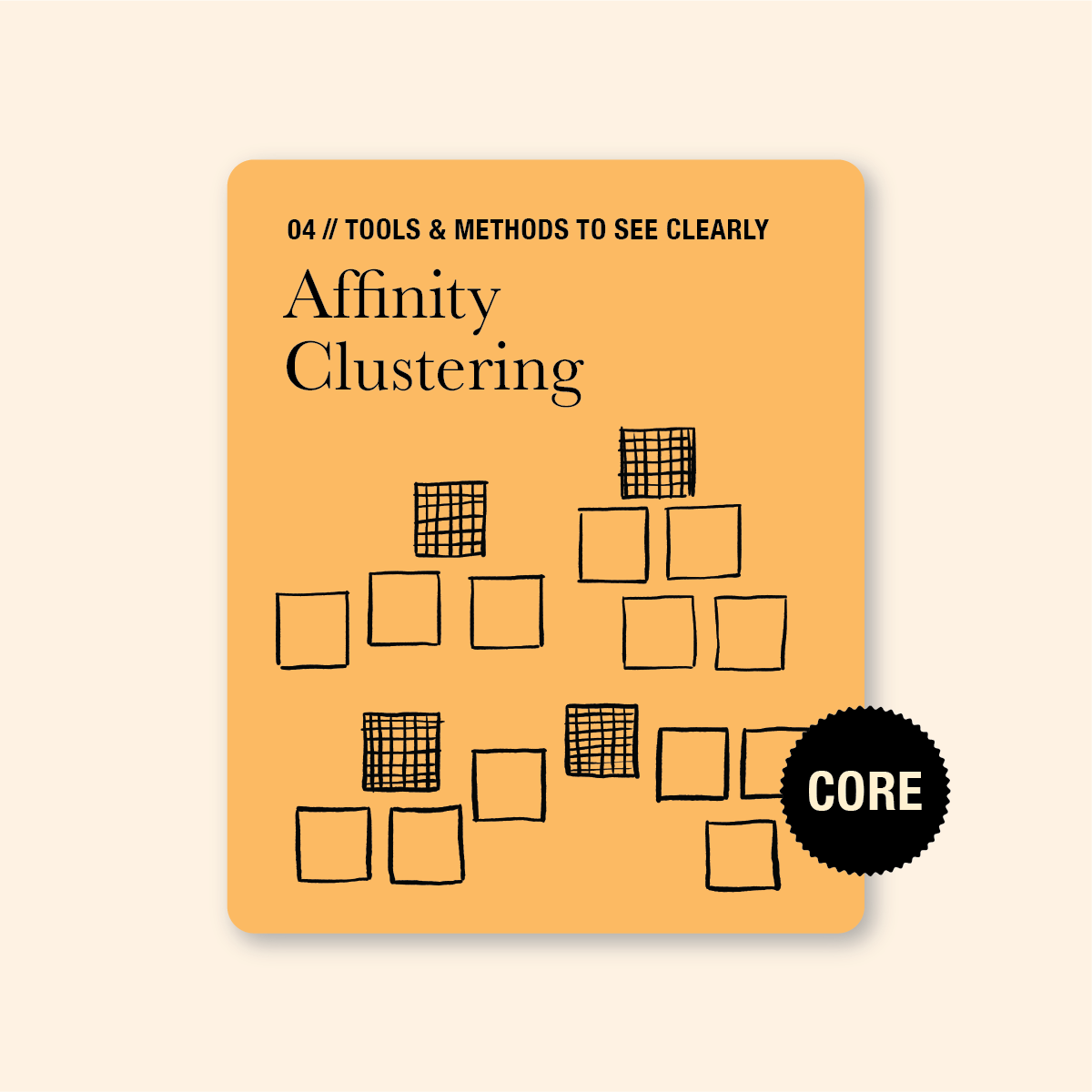Affinity Clustering
A Core Method for Sense-making, Sorting Ideas by Similarity
Affinity Clustering is a visual technique designers use to organise ideas, observations or data points by similarity or relevance. It is especially useful when there’s a lot of input from multiple perspectives.
This helps to:
Identify problems, patterns, insights
Find focus and group scattered thoughts
Drive discussions while hearing diverse perspectives
Why this Works for Families
Family life involves juggle different needs, emotions, and perspectives, often all at once. When trying to make decisions or find alignment, it can often feel like chaos with too many voices, too many ideas and no clear way forward.
Affinity Clustering cuts through the noise by laying out everyone’s thoughts visually and grouping them, so patterns become visible. Instead of one person dominating the decision, the whole family can see connections and shape solutions together. This shifts the process from overwhelm and frustration to clarity and collaboration.
What You’ll Need
Sticky notes or small plain paper
Pens or markers
A flat surface (wall, table, or large sheet of paper)
Quick Guide with Example
Goal: Gather inputs and sort them into meaningful clusters.
Method:
Pose a question to discuss (or use input from another tool e.g Family Values Canvas)
Capture input, one per sticky note. Younger kids can share out loud while an adult writes. Clarify their input before writing if needed.
Share and group notes with similar themes. Refine together and finalise themes.
Example: What are some things that are important to us as a family?
Raw Inputs:
“When we invite friends to our house”
“Decide how I spend my own money”
“Yummy food”
“Holidays with family friends/extended family”
“More X-box time”
“Crazy Music and Dance Parties”
“Time without devices”
“Not so strict with rules”
Clustered themes:
Social Connection with others
“When we invite friends to our house”
“Holidays with family friends/extended family”Fun Family Activities
“Yummy food”
“Crazy Music and Dance Parties”
“Time without devices”Independence & Autonomy
“Decide how I spend my own money”
“More X-box time”
“Not so strict with rules”
At the end, you’ll have clear clusters that make it easier to see patterns and decide on next steps together.
Tips for Parents
Stay neutral. As a facilitator and participant, guide the process without judging anyone’s input. Encourage openness.
Clarify gently. Ask questions like ‘what do you mean when you say…’
Include younger kids. Keep sessions short, light and playful. Even if their input seem silly, writing them down shows their voice matters.
Pair with other tools. For example, use 5W1H to gather inputs, then cluster them to spot patterns.
Recap:
Affinity Clustering helps families collect multiple inputs into clear groups that are easy to understand. By sorting inputs into themes, everyone can see connections, build alignment, and make decisions together. It is a powerful way to ensure all voices are heard and decision-making feels collaborative.



